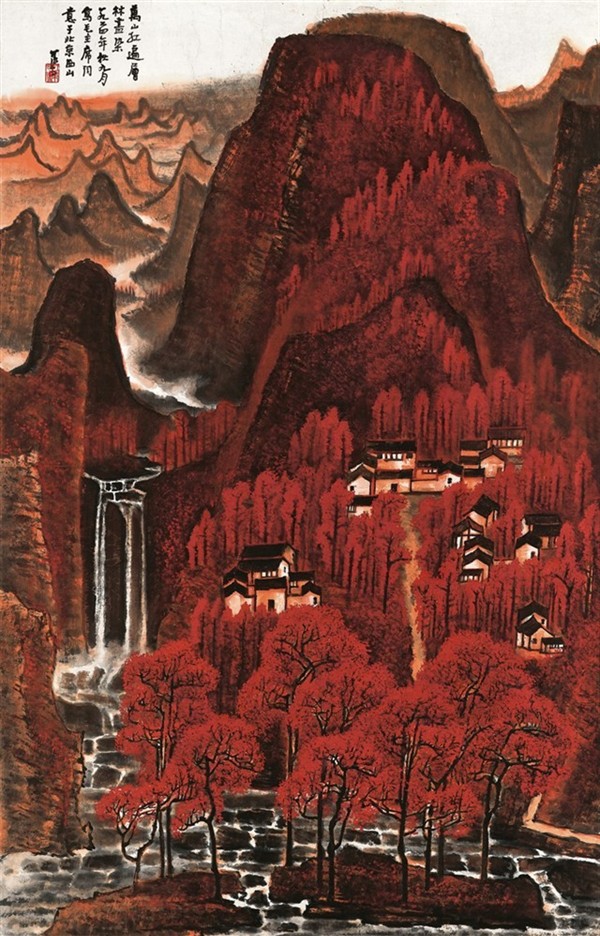Li Keran (1907-1989) was a prominent painter and art educator in the twentieth century. Li Keran studied at the Shanghai Art Academy and the National Academy of Arts in China. He became a professor at the prestigious Central Academy of Fine Arts later in his life. His style of artwork was Western oil painting and Literati painting (ink wash painting). He was an innovator in China because he brought western oil techniques to Chinese art. He worked for the government of China and created anti-Japanese posters during the Second Sino-Japanese War. Li Keran was mentored by Qi Baishi and Huang Binhong. He lived through and experienced extreme social change when the People’s Republic of China was founded in 1949 by Mao Zedong. Li Keran was able to expand on his own theory of art when he went on a three-month trip (South of Yangtze) with two other prominent artists to discover his technique and style. He expanded on landscape painting along with Western realist art and Literati painting. Today, his artwork is some of the most valued pieces across the global art market.

Landscape in Red, 1964
This piece is a clear example of Li Keran’s style and technique. This piece sold for $46 million in 2016.
References
Roberts, Claire (December 2007). “A Century of Li Keran”. China Heritage Quarterly.
“Li Keran.” Wikipedia. Wikipedia Foundation. https://en.wikipedia.org/wiki/Li_Keran

